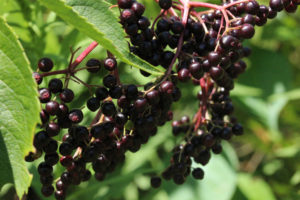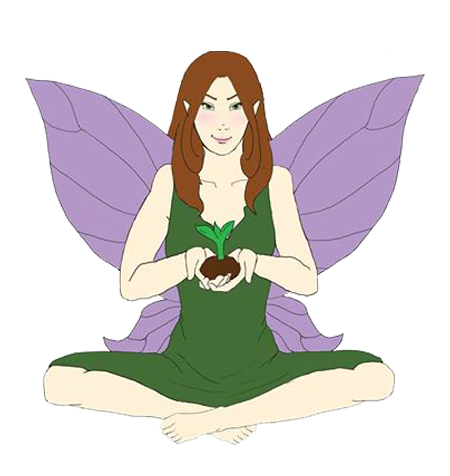I love gardening. It’s a passion, a meditation, a place that reconnects me to the Earth over and over again. I find that as I enter the garden, I step into a magical world out of reach of time and space. A dramatic shift takes place in my consciousness as the garden itself speaks to me. Some of my most profound insights are realized while gardening or wild-crafting.
 I have a Medicine Wheel Garden that is about 35 feet in diameter. It’s quite a lot of space that I haven’t quite filled yet and perhaps I never will. It’s a work in progress that I believe most gardeners can relate to. “What’s a Medicine Wheel Garden?”, you ask? A Medicine Wheel Garden is a garden arranged within a circle with, at a minimum, stones marking off the four directions, north, east, south, west, plus the direction of center, or “within”, marked off at the center of the circle. Stones are also designated for Grandmother Moon, Grandfather Sun, Mother Earth, and Father Sky. Depending upon how detailed, the Medicine Wheel may include stones around its circumference, each one representing a different quality.
I have a Medicine Wheel Garden that is about 35 feet in diameter. It’s quite a lot of space that I haven’t quite filled yet and perhaps I never will. It’s a work in progress that I believe most gardeners can relate to. “What’s a Medicine Wheel Garden?”, you ask? A Medicine Wheel Garden is a garden arranged within a circle with, at a minimum, stones marking off the four directions, north, east, south, west, plus the direction of center, or “within”, marked off at the center of the circle. Stones are also designated for Grandmother Moon, Grandfather Sun, Mother Earth, and Father Sky. Depending upon how detailed, the Medicine Wheel may include stones around its circumference, each one representing a different quality.
The Medicine Wheel is a sacred space, a tool for spiritual growth, it’s a teaching tool, a healing vortex. Given their sacredness and connection to the Creator, planting medicinal plants within this framework is a natural interpretation of this space. Plants can be arranged by their elemental association, north=earth, east=air, south=fire, west=water, center=spirit or ether, or in a random pattern. Most often I’ve found the plants tell me where they’d like to reside, not the other way around. I may have an idea of where a plant would do best but very often the plants will know better. I’m not entirely certain what is their criteria for placement as it often defies gardening logic as I know it. I’ve seen plants defy their usual requirement for sun, and water and show up in the unlikeliest of places. I’ve placed plants that require 8 hours of sun in the sunniest spot in the garden only to watch them die off and relocate themselves a few seasons later in a completely inappropriate spot. Thriving. Go figure.
I teach Medicine Wheel Gardening. Again, one of my favorite topics to teach. It’s a challenging topic to share in a way because there are so many layers to the Medicine Wheel. It requires a lifetime of learning and openness. Whenever we enter into sacred space in a conscious way, be that for ritual or gardening, everything that happens becomes synchronistic, and if we’re paying attention we can find the lessons. Such as it is for me in the garden. When I teach Medicine Wheel we talk about design and I hand out templates for students to work on their garden design but I always mention to leave room for the unexpected. We may plan the garden in a particular way, full of specific plants that we’d like to thrive in our garden, we give them exactly what they need to grow, the right sun, soil, fertilizer, water, and yet they may still fail to thrive. Why? They just do not want to be in that spot. Oftentimes there is no logical reason.
because there are so many layers to the Medicine Wheel. It requires a lifetime of learning and openness. Whenever we enter into sacred space in a conscious way, be that for ritual or gardening, everything that happens becomes synchronistic, and if we’re paying attention we can find the lessons. Such as it is for me in the garden. When I teach Medicine Wheel we talk about design and I hand out templates for students to work on their garden design but I always mention to leave room for the unexpected. We may plan the garden in a particular way, full of specific plants that we’d like to thrive in our garden, we give them exactly what they need to grow, the right sun, soil, fertilizer, water, and yet they may still fail to thrive. Why? They just do not want to be in that spot. Oftentimes there is no logical reason.
 Likewise, I like to see what “shows up”. I keep room for the unexpected. I never plan so much into the garden that there’s no room for my wild visitors. If I did that I would miss out on a lot. The first year I planted this garden I noticed there were an abundance of Violets (Viola cucullata). Many home owners and gardeners consider these plants a nuisance and will rip them out but their flowers are truly lovely, and tasty and their medicinal benefits are quite impressive (read blog post on Violet here) and I try to eat some of them every day. By the second year the Goldenrod (Solidago canadensis) had shown up (read blog post on Goldenrod here) in all her early autumn glory. Another useful medicinal in addition to being a stunner. Followed shortly by Fleabane (Erigeron pullchellus), Lobelia (Lobelia inflata), and one of my very favorites St. John’s Wort (Hypericum perforatum). Had I stuck to the “plan” stubbornly refusing to deviate, I would have missed out on so much beauty, and healing and the native bees would have missed out on important food sources. This attitude of co-creating with nature has allowed me to notice how plants show up year after year and excitedly wait to see who will be a new visitor each season. It’s allowed me to be present to the complex relationship between plants and insects. As the garden and land has been allowed to grow in a more natural way, other beings have been drawn to the area. Wild turkeys, hummingbirds, chipmunks, a couple of skunks, a raccoon, and various other critters have become regulars in our little homestead. It’s been one of my greatest joys to watch this interaction. “Allowing” has given me this opportunity.
Likewise, I like to see what “shows up”. I keep room for the unexpected. I never plan so much into the garden that there’s no room for my wild visitors. If I did that I would miss out on a lot. The first year I planted this garden I noticed there were an abundance of Violets (Viola cucullata). Many home owners and gardeners consider these plants a nuisance and will rip them out but their flowers are truly lovely, and tasty and their medicinal benefits are quite impressive (read blog post on Violet here) and I try to eat some of them every day. By the second year the Goldenrod (Solidago canadensis) had shown up (read blog post on Goldenrod here) in all her early autumn glory. Another useful medicinal in addition to being a stunner. Followed shortly by Fleabane (Erigeron pullchellus), Lobelia (Lobelia inflata), and one of my very favorites St. John’s Wort (Hypericum perforatum). Had I stuck to the “plan” stubbornly refusing to deviate, I would have missed out on so much beauty, and healing and the native bees would have missed out on important food sources. This attitude of co-creating with nature has allowed me to notice how plants show up year after year and excitedly wait to see who will be a new visitor each season. It’s allowed me to be present to the complex relationship between plants and insects. As the garden and land has been allowed to grow in a more natural way, other beings have been drawn to the area. Wild turkeys, hummingbirds, chipmunks, a couple of skunks, a raccoon, and various other critters have become regulars in our little homestead. It’s been one of my greatest joys to watch this interaction. “Allowing” has given me this opportunity.
Don’t get me wrong, I think it’s great to have a plan, in gardening as well as in life. I admire people that have a vision that they tenaciously stick to through whatever weather and charge fearlessly ahead. But I’ve also seen people trample over the beauty, and sometimes other people, on the way to the “prize”. I’ve seen many people miss out on the journey in pursuit of the end goal. And we’re never really guaranteed that end goal. Many things can happen along the way. We’re also never guaranteed that if we do indeed reach it, that it’s going to fill us up inside. Oftentimes when we trample through goals and ideas we lose sight of ourselves, our needs, and self-care can suffer so much along the way that by the time we do get there we barely recognize ourselves anymore. In life as well as in gardening, it’s often the unexpected twists and turns along the way that make life colorful. “Allowing” is full of flow, gentleness, and grace. “Allowing” acknowledges that there is a Higher Force at work in this Universe and our best selves are realized when we learn to dance with it rather than forcing our will along the way.










 I have a Medicine Wheel Garden that is about 35 feet in diameter. It’s quite a lot of space that I haven’t quite filled yet and perhaps I never will. It’s a work in progress that I believe most gardeners can relate to. “What’s a Medicine Wheel Garden?”, you ask? A Medicine Wheel Garden is a garden arranged within a circle with, at a minimum, stones marking off the four directions, north, east, south, west, plus the direction of center, or “within”, marked off at the center of the circle. Stones are also designated for Grandmother Moon, Grandfather Sun, Mother Earth, and Father Sky. Depending upon how detailed, the Medicine Wheel may include stones around its circumference, each one representing a different quality.
I have a Medicine Wheel Garden that is about 35 feet in diameter. It’s quite a lot of space that I haven’t quite filled yet and perhaps I never will. It’s a work in progress that I believe most gardeners can relate to. “What’s a Medicine Wheel Garden?”, you ask? A Medicine Wheel Garden is a garden arranged within a circle with, at a minimum, stones marking off the four directions, north, east, south, west, plus the direction of center, or “within”, marked off at the center of the circle. Stones are also designated for Grandmother Moon, Grandfather Sun, Mother Earth, and Father Sky. Depending upon how detailed, the Medicine Wheel may include stones around its circumference, each one representing a different quality. because there are so many layers to the Medicine Wheel. It requires a lifetime of learning and openness. Whenever we enter into sacred space in a conscious way, be that for ritual or gardening, everything that happens becomes synchronistic, and if we’re paying attention we can find the lessons. Such as it is for me in the garden. When I teach Medicine Wheel we talk about design and I hand out templates for students to work on their garden design but I always mention to leave room for the unexpected. We may plan the garden in a particular way, full of specific plants that we’d like to thrive in our garden, we give them exactly what they need to grow, the right sun, soil, fertilizer, water, and yet they may still fail to thrive. Why? They just do not want to be in that spot. Oftentimes there is no logical reason.
because there are so many layers to the Medicine Wheel. It requires a lifetime of learning and openness. Whenever we enter into sacred space in a conscious way, be that for ritual or gardening, everything that happens becomes synchronistic, and if we’re paying attention we can find the lessons. Such as it is for me in the garden. When I teach Medicine Wheel we talk about design and I hand out templates for students to work on their garden design but I always mention to leave room for the unexpected. We may plan the garden in a particular way, full of specific plants that we’d like to thrive in our garden, we give them exactly what they need to grow, the right sun, soil, fertilizer, water, and yet they may still fail to thrive. Why? They just do not want to be in that spot. Oftentimes there is no logical reason. Likewise, I like to see what “shows up”. I keep room for the unexpected. I never plan so much into the garden that there’s no room for my wild visitors. If I did that I would miss out on a lot. The first year I planted this garden I noticed there were an abundance of Violets (Viola cucullata). Many home owners and gardeners consider these plants a nuisance and will rip them out but their flowers are truly lovely, and tasty and their medicinal benefits are quite impressive (read blog post on Violet
Likewise, I like to see what “shows up”. I keep room for the unexpected. I never plan so much into the garden that there’s no room for my wild visitors. If I did that I would miss out on a lot. The first year I planted this garden I noticed there were an abundance of Violets (Viola cucullata). Many home owners and gardeners consider these plants a nuisance and will rip them out but their flowers are truly lovely, and tasty and their medicinal benefits are quite impressive (read blog post on Violet 

 Every August I watch in anticipation for the deep purple berries of the Elder Tree. It’s technically not a tree at all but a tall growing shrub reaching heights of up to 12 feet. My obsession begins early in the summer at the end of June when the effusive flush of the fragrant inflorescence form into panicles of creamy white. Remarkably beautiful are the flowers that I can’t bear to harvest them plus I love the berries too much! These white blossoms have a special magic and medicine all their own, often being made into flavorful concoctions such as Elder Wine or Elder Flower Cordials, or into foods such as Elder Flower Fritters. Their medicinal uses are impressive as well for they are considered diaphoretic and carminative in nature and useful as teas to help resolve colds and flus quickly often reducing their duration by several days. Recent studies also suggest that Elder flowers have anticancer benefits and may help to support eye health.
Every August I watch in anticipation for the deep purple berries of the Elder Tree. It’s technically not a tree at all but a tall growing shrub reaching heights of up to 12 feet. My obsession begins early in the summer at the end of June when the effusive flush of the fragrant inflorescence form into panicles of creamy white. Remarkably beautiful are the flowers that I can’t bear to harvest them plus I love the berries too much! These white blossoms have a special magic and medicine all their own, often being made into flavorful concoctions such as Elder Wine or Elder Flower Cordials, or into foods such as Elder Flower Fritters. Their medicinal uses are impressive as well for they are considered diaphoretic and carminative in nature and useful as teas to help resolve colds and flus quickly often reducing their duration by several days. Recent studies also suggest that Elder flowers have anticancer benefits and may help to support eye health. leave enough for my wild friends. Infinitely delicious are the berries, that they have been used in cooking pies and jams for centuries not to mention Elderberry Wine and jelly! Elderberries have impressive antiviral properties that are equal to or greater than modern vaccines without the side effects. Elderberry Syrup can be taken throughout flu and cold season as a highly effective preventative remedy and it’s delicious too! I take the Elderberry Syrup all season as it keeps me from getting ill and I feel great from all the antioxidants contained within. High in anthocyanins, Elderberries are a wonderful tonic for the heart and for supporting healthy eyes as do many of the darker berries such as Bilberry which were used in WWII by British fighter pilots to improve their night vision. Likewise, Elderberries may provide support for those with type 2 diabetes.
leave enough for my wild friends. Infinitely delicious are the berries, that they have been used in cooking pies and jams for centuries not to mention Elderberry Wine and jelly! Elderberries have impressive antiviral properties that are equal to or greater than modern vaccines without the side effects. Elderberry Syrup can be taken throughout flu and cold season as a highly effective preventative remedy and it’s delicious too! I take the Elderberry Syrup all season as it keeps me from getting ill and I feel great from all the antioxidants contained within. High in anthocyanins, Elderberries are a wonderful tonic for the heart and for supporting healthy eyes as do many of the darker berries such as Bilberry which were used in WWII by British fighter pilots to improve their night vision. Likewise, Elderberries may provide support for those with type 2 diabetes.
